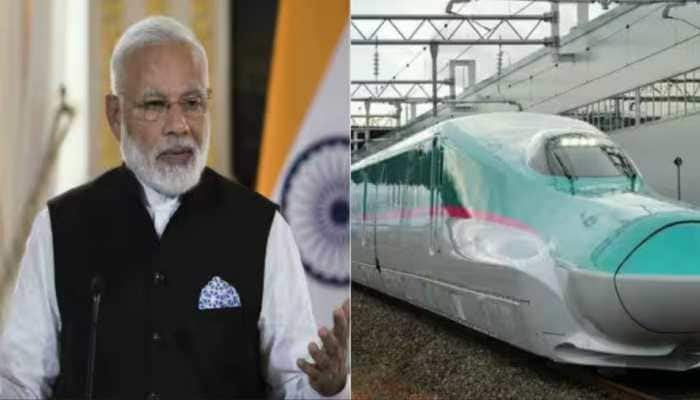Why China is afraid of hardliner Tibetan Leader Dolma Gyari?
Ahead of Central Tibetan Administration election, candidates are intensifying their poll campaigns to represent one of the largest communities in exile.
- Ahead of Central Tibetan Administration election, candidates are intensifying their poll campaigns to represent one of the largest communities in exile.
- However, the CCP has yet again come into the picture to sabotage impartial election through its disinformation campaigns.
Trending Photos
)
As the elections for the Central Tibetan Administration (CTA) are approaching, candidates are gearing up and intensifying their respective election campaigns to represent one of the largest communities in exile. However, the Chinese Communist Party (CCP) has yet again come into the picture and began making efforts to influence and sabotage impartial election through its disinformation campaigns.
Similar to the interference in elections of countries like Taiwan and the US, the CCP has deployed its propaganda machinery to influence the CTA election. Chinese social media army along with its state media outlets have come up with a litany of propaganda content on these elections. Interestingly, most of the content is directed to target presidential candidate Dolma Gyari--the first female candidate running for the top post.
In one of such Propaganda stories published over China’s state media outlet Xinhua, China attacked Dolma Gyari for meeting US lawmaker Jim McGovern and others and attempted to highlight her Western connections. The story titled “Meeting between US lawmakers and Zhuoma (Dolma) Gyari escalates US-China tension: Chinese FM’, argued that these meetings are going to worsen the relationship between the US and China.
The story termed these meetings as ‘unlawful’ and added, “these moves are doomed to be in vain. China's internal affairs will not tolerate any interference from any other country. Beijing has the determination and capability to safeguard national sovereignty and territorial integrity.”
Geopolitical observers highlight that China wants to avoid the situation where it will have to fight an outspoken and popular leader with adherent anti-China sentiments like Dolma. An efficient orator, she is recognized for speaking the unpleasant truth without hesitation. In 2008, as a young leader and member of the assembly, she cautioned China on the negotiations and said, “The ball is in China’s court. The Tibetan exile government will suspend negotiations with Chinese Communist Party officials. His Holiness Dalai Lama has done everything he can possibly do to negotiate in good faith.”
Those who have seen her during her young days remember her thought-provoking speeches as a young leader of the Regional Tibetan Youth Congress in Chandigarh and later as a leader of the Central Tibetan Youth Congress. Known for her outspoken nature, she has always been reiterating the need for India to rethink its China policy.
Speaking at an event in Pune in April 2019, she said, “India has maintained peaceful relations with China and even supported China’s membership to the United Nations. However, China consistently failed to reciprocate similar attitudes toward India. This is why India needs to rethink its policy towards China.” She also took on the United Nations for its delayed response on Pulwama attack due to Chinese influence.
Contrary to the claims made in the Xinhua article, a couple of members of the Tibetan community have highlighted that unlike most of the Tibetan leaders who have a base in the West and are connected to Western NGOs, Dolma Gyari is out and out ‘People's Leader’. Over the years, a number of prominent Tibetan leaders have faced the heat for connections to foreign NGOs and utilization of funds. Absence of any such foreign linkages adds to Dolma’s image of a grassroots leader. It is interesting to note that instead of being unconnected to foreign NGOs and Western players, she enjoys a good hold over local Tibetan NGOs and tights groups working for the welfare of the community.
Dolma received worldwide recognition for her efforts for the welfare of Tibetan settlers in India and elsewhere in the world, especially for rehabilitation and housing of community members. During her tenure as the Home Minister, she convinced the Karnataka government to implement the Central Tibetan Rehabilitation Policy in the state. Consequently, the Karnataka government issued Rights Tenancy and Crops (RTC) records for Tibetans and made them eligible to avail all those benefits entitled to farmers of the state. Under her, the Home Department also managed to gather funds for continuous power supply to Tibetan settlements in the state.
In fact, during her term in the Home Department, a major focus area of her work was to ensure housing for Tibetans across India. She is considered as the chief architect behind the construction of houses for newly arrived Tibetan in Bir, Himachal Pradesh. This long-awaited project gained momentum as soon as she took charge of the Home Department.
Similarly, she called a series of meetings and made numerous representations to the Indian government as well as the state government of Uttarakhand for construction of a new housing facility for newly arrived Tibetans at Dekyiling in Dehradun. Further, she also began the construction of houses for settlement of newly arrived Tibetans in south India’s Bylakuppe.
When the Indian government decided to widen NH-1 in New Delhi along with Tibetan settlements in Majnu Ka Tila and Ladakh Vihara, she made numerous representations to Indian leaders and lawyers to save the Tibetan settlements from being uprooted from what was considered as encroached forest area by the National Green Tribunal (NGT).
Similar efforts were made by her in Nepal and Bhutan as well. She fast-tracked the solution of issues of the Tibetan community, pending for years in both the countries. In Nepal, she ensured speedy completion of pending projects related to Tibetans in Nepal and ensured that the community is entitled to the benefits of several social security schemes. Through the Bhutanese envoy, she ensured that the pending citizenship cases of Tibetans in Bhutan are taken on a priority basis and concluded soon.
However, there is one more fact that gets largely unnoticed when one assesses the performance of Dolma. Members of the Tibetan community, as well as observers of the CTA, argue that she is considered as ‘a leader of good governance’. During her tenure as the Home Minister, she successfully implemented novel projects, ensuring better living conditions and emancipation of the Tibetan community.
In Himachal Pradesh, when Rajiv Gandhi Anna Yojana was initially implemented, she ensured that Tibetans get included in the list of beneficiaries and avail the benefit of procuring food grains at a minimal cost. She also travelled to Ladakh to assess the situation of Tibetan nomads staying along the Indo-Tibetan border under harsh conditions. She convened a meeting of local Tibetan leaders and top Indian government officials to ensure that the living conditions of nomads are improved and they are entitled to basic amenities of life. A huge amount of fund was also allocated towards this.
For housing of the Tibetan in exile, she managed to convince the Indian government to include Tibetans in the list of beneficiaries under the Pradhan Mantri Gramin Awaas Yojana (PMGAY) during her tenure.
Dolma Gyari has been a strong advocate for creating a financially sustainable and self-dependent economy of the Tibetan Community and took a couple of landmark steps towards this direction. Understanding the role of the cooperative sector in enhancing the income of Tibetans, she officially brought the Federation of Tibetan Cooperative (FTA) under the CTA, as an autonomous body. She also worked to ensure smooth coordination and a flawless workflow between the CTA and Tibetan Settlement Officers (TSOs).
In another effort to accelerate revenue generation for Tibetans, she worked to develop Tibetans settlements across India as tourist destinations. She also organised Tibet festivals across metro cities of India in 2015, Focusing on economic centres including malls, city centres, and other popular destinations. Besides popularizing the messages of His Holiness Dalai Lama and strengthening the campaign for the independence of Tibet, these events also helped to generate a significant amount of revenue for the CTA. She was also able to generate funds from a couple of state governments in India for organizing such festivals.
Political scientists argue that Dolma is a mix of an efficient negotiator and a diplomat with a nuanced approach. The fact that she managed to include the Tibetan community in the list of beneficiaries of social security schemes in several Indian states and Nepal highlights her effective negotiation skills and quality to bring different stakeholders on the same table and at the same time, her qualities of meeting and convincing top diplomats and leaders across the world make her a good diplomat.
Besides her oratory skills, Dolma also recognized for her feminist thoughts and efforts of women empowerment. Being the first Tibetan lady to head the Home Department and perhaps the most powerful female in the Tibetan community in exile, Dolma plans to promote more and more female leaders and project them at the global fora to voice the Tibetan cause. Political observers believe that Dolma is receiving massive support from the females of the Tibetan community in the run-up for Sikyong.
Due to Dolma’s unmatched potential, versatile skills, and popular support, coupled with her aggressive approach towards China has made the CCP more vulnerable towards her candidature and its propaganda unit has launched a disinformation campaign against her to counter her Sikyong campaign.
However, one would have to wait for the election results to figure out the impact made by the Chinese disinformation campaign. Nevertheless, the world is closely observing how a female political heavyweight contests the election for the top post to represent the Tibetan community settled across the globe.
Stay informed on all the latest news, real-time breaking news updates, and follow all the important headlines in india news and world News on Zee News.
Live Tv







)
)
)
)
)
)
)
)
)
)
